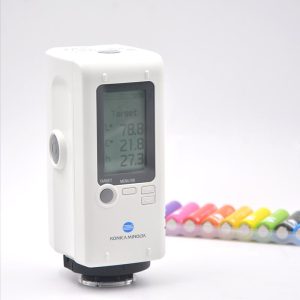The key performance of powder coating and its testing instrument
Powder coating is a kind of solvent free environmental protection coating, is formed by resin, pigment, filler and other mixtures after high temperature melting powder, electrostatic adsorption or spraying methods coated on the surface of the object and formed a layer of hard coating film after heating and curing. Due to its solvo-free, effective and energy-saving characteristics, powder coatings are widely used in various fields such as metal products, furniture, construction, electronics and electrical appliances. Specific application fields include automobile, motorcycle, bicycle, steel structure, agricultural machinery, petrochemical equipment, medical equipment, electrical and electronics, aerospace, military, daily necessities, decorative materials, etc. Because of its environmental protection, energy saving, aesthetic, corrosion resistance, wear resistance and other advantages, powder coating has been widely used in various fields, and gradually replaced the traditional coating process.
Test performance and instrument
| Name of performance | Instruments and equipment used |
|---|---|
| Particle size of powder | Particle size analyzer |
| Flexibility and flexibility | Compliance meter |
| Force of adhesion | Adhesion testing machine |
| Resistance to abrasion | Wear testing machine |
| Resistance to corrosion | Salt spray test box, corrosion resistance test machine |
| Degree of gloss | Gloss meter |
Step of detection
The following are the detailed testing steps:
Powder granularity: Using the particle size analyzer, take a certain amount of powder samples, put into the instrument, according to the instrument prompts for testing, the particle size distribution.
Flexibility: Using a flexibility meter, the coating sample is fixed on the equipment, and a certain bending test is carried out to evaluate the flexibility by observing the deformation degree of the coating.
Adhesion: Use the adhesion testing machine, paste the coating sample on the board of the testing machine, carry out tensile test, and evaluate the adhesion between the coating and the substrate through the display results of the testing machine.
Wear resistance: the wear testing machine is used to fix the coating sample on the equipment and conduct a certain wear test. The wear resistance of the coating is evaluated by observing the wear degree of the coating.
The key performance of powder coating and its testing instrument
Corrosion resistance: use salt spray test box or corrosion resistance test machine, put the coating sample into the test equipment, under certain temperature and humidity conditions for corrosion test, by observing the change of the coating, to evaluate its corrosion resistance.
Gloss: Use gloss meter, put the coating sample on the equipment, test according to the equipment prompts, get the gloss value of the coating, to evaluate its appearance quality.
Rheological performance: Use rheometer, put the coating sample into the equipment, test according to the equipment prompts, get the rheological performance parameters of the coating, including viscosity, shear modulus, etc., to evaluate the coating performance.
Density: Using a densitometer, put the coating sample into the equipment, test according to the equipment prompts, and get the density value of the coating to evaluate its quality and whether the formula is correct.
Curing time: Use the curing time tester, put the coating sample into the equipment, test according to the equipment prompts, get the curing time of the coating, to evaluate its curing performance.
The key performance of powder coating and its testing instrument
Corrosion resistance: use salt spray test box or corrosion resistance test machine, put the coating sample into the test equipment, corrosion test under certain temperature and humidity conditions, by observing the change of the coating, to evaluate its anti-corrosion performance.
Antibacterial: Use the antibacterial tester, put the coating sample into the equipment, according to the equipment prompts for testing, get the antibacterial rate of the coating, to evaluate its bactericidal performance.
Color difference: Using a colorimeter, the color of the coating sample is measured and compared with the standard color to evaluate the degree of color difference of the coating.

